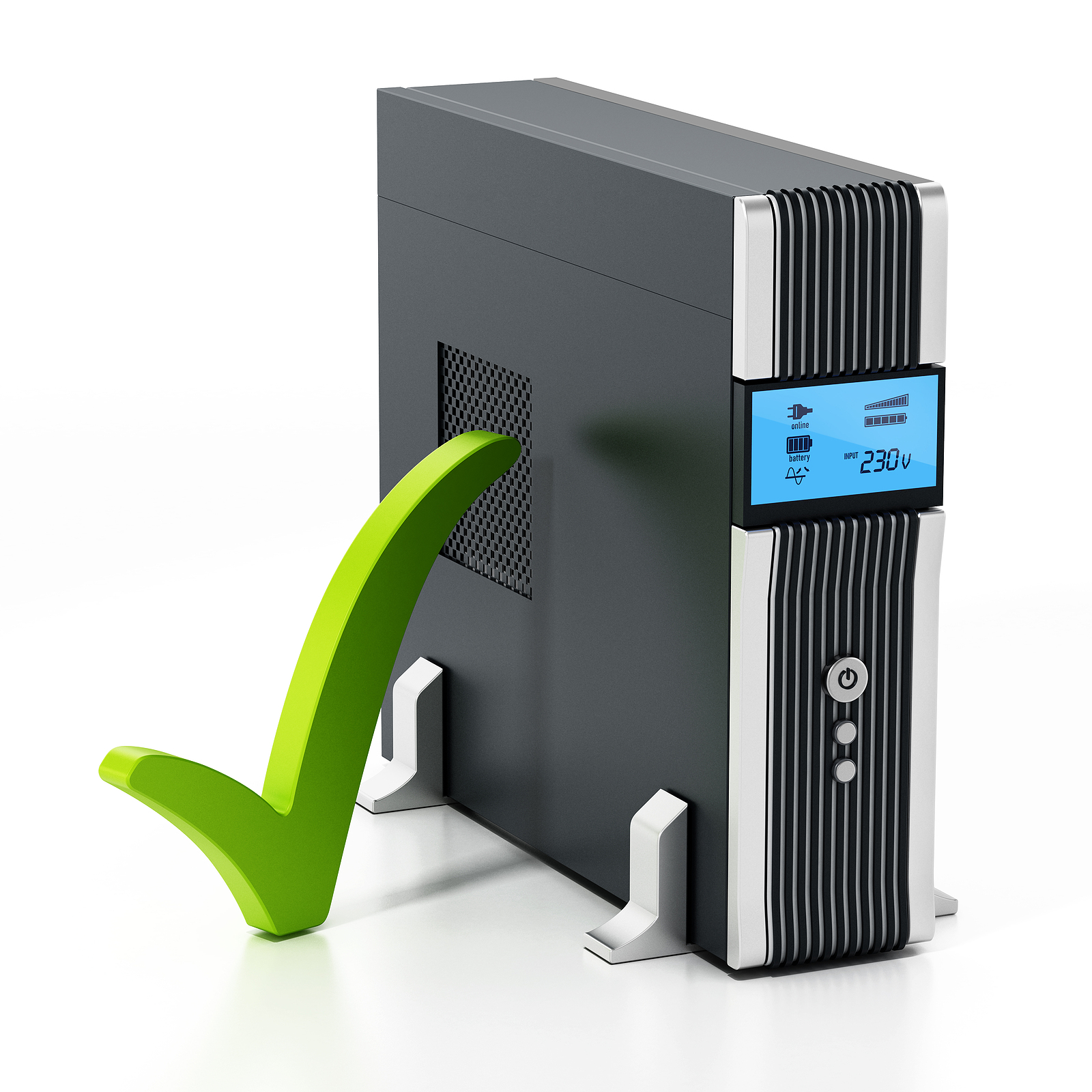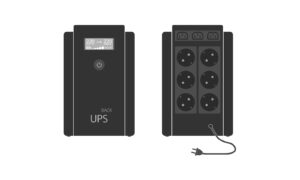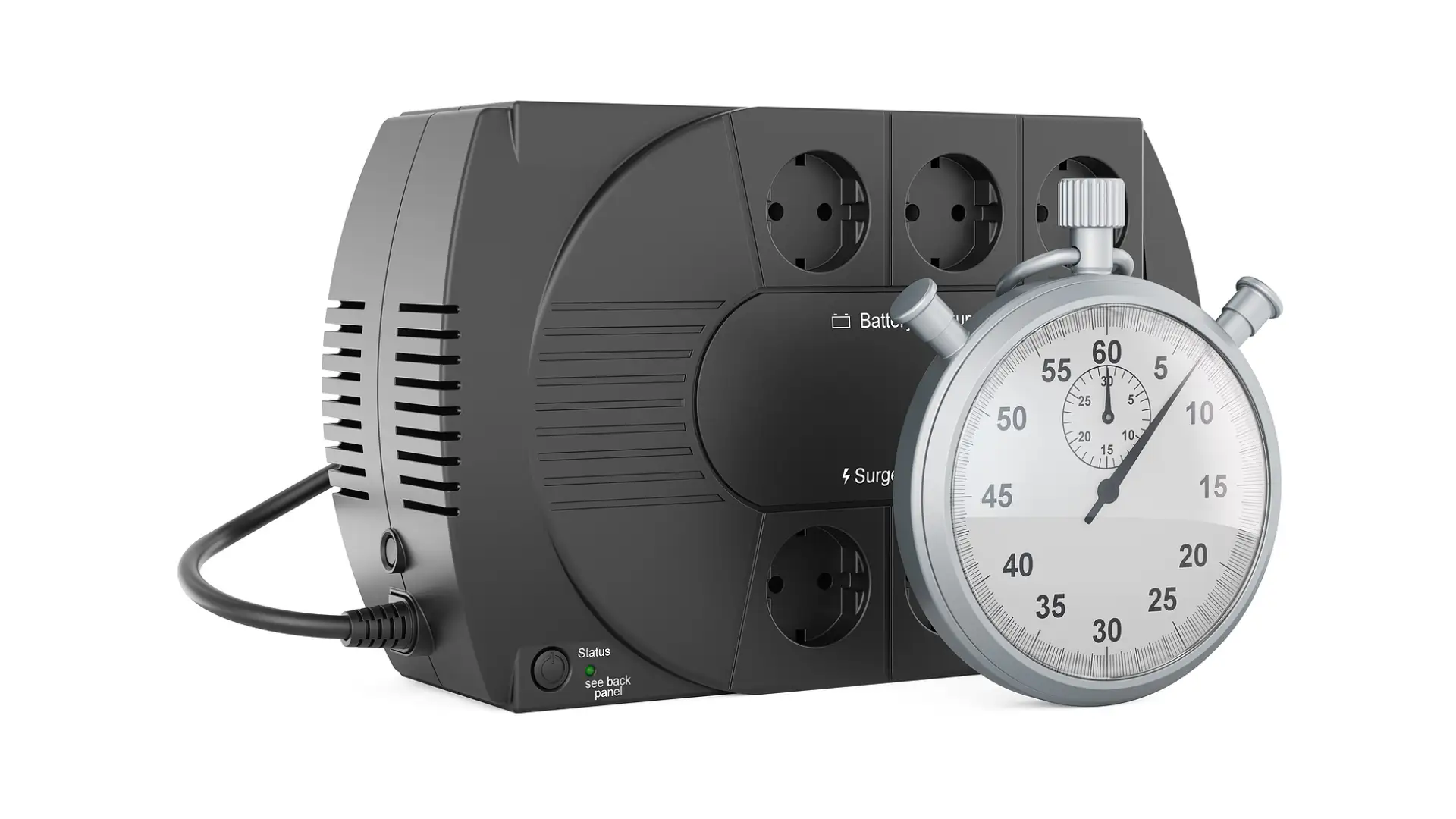
How Long Do Uninterruptible Power Supplies Last
If you've ever experienced a sudden power outage and lost important data, you know the importance of having a backup power supply. This is where Uninterruptible Power Supplies (UPS) come into the picture. But a crucial question arises: How long do uninterruptible power supplies last?
In this guide, we'll delve into the lifespan of a UPS, factors that affect its longevity, and tips for extending its useful life. This is your go-to resource for all things related to the lifespan of uninterruptible power supplies.
What is an Uninterruptible Power Supply (UPS)?
An Uninterruptible Power Supply, commonly abbreviated as UPS, is an electrical apparatus designed to provide instantaneous power support to the devices connected to it in the event of a power disruption or when the main power supply dips below a specific, acceptable voltage threshold. Essentially, it acts as a bridge between the main power source and your electronic devices, ensuring they continue to operate even during power interruptions.
The primary function of a UPS is not just to keep devices running during power outages but to offer users a brief window of time to save any unsaved work and carry out a systematic shutdown of their computers or other critical equipment. This proactive approach prevents potential data loss and the resultant damage that sudden power cuts can inflict on delicate hardware components.
Types of UPS
Standby UPS (Offline UPS):
-
- Function: This is the most basic form of UPS. When the mains power is functioning correctly, the Standby UPS allows it to pass through to the connected devices. But when it detects a power outage or an unacceptable voltage drop, it immediately switches to battery mode to provide backup power.
- Features: It primarily offers basic battery backup and protection against power surges, which are sudden increases in voltage that can damage electronic devices.
Line-Interactive UPS:
-
- Function: Slightly more advanced than the Standby UPS, the Line-Interactive UPS actively monitors the incoming voltage and has the capability to boost or decrease it to maintain an acceptable level. If a power outage occurs, it switches to its internal battery for backup.
- Features: Apart from battery backup, it offers voltage regulation capabilities. This means it can correct low or high voltages to an acceptable level without resorting to the battery, extending the battery life.
Online UPS (Double Conversion UPS):
-
- Function: This type of UPS continuously powers the connected devices through its battery while simultaneously charging the battery using the main power source. Essentially, there's a double conversion happening: from AC power to DC (to charge the battery) and then back to AC to power the devices.
- Features: Due to its design, the Online UPS offers the highest level of power protection. This makes it an ideal choice for mission-critical systems and setups that cannot afford even a millisecond of power interruption, like data centers and critical medical equipment.
Average Lifespan of a UPS
The durability and lifespan of an uninterruptible power supply (UPS) can be contingent on a plethora of variables. Factors such as the specific type of the UPS, the manner and frequency of its usage, as well as the environmental conditions in which it operates, all play pivotal roles in determining how long it will serve its purpose efficiently. Breaking it down by categories:
- Consumer-grade UPS: Designed primarily for home users and personal electronics, these UPS units typically exhibit a lifespan ranging from 3 to 5 years. Their primary function is to provide short-term power backup and surge protection to devices like computers and home entertainment systems.
- Business-grade UPS: Crafted to serve the more demanding needs of business infrastructures such as office IT systems and communication tools, these UPS systems often last between 4 to 7 years. They are engineered to handle more significant power capacities and often come with features that cater to business continuity requirements.
- Industrial-grade UPS: These are robust systems designed for critical operations in sectors like manufacturing, healthcare, and large data centers. They can effectively function for an impressive 10 to 15 years, thanks to their superior build quality and the ability to manage high power loads consistently.
Significance of the UPS Batteries
When discussing the longevity of a UPS, one cannot overlook the integral role played by its battery. Essentially, the battery is the heart of a UPS, dictating its efficiency and performance.
- Standard UPS Batteries: The average battery, depending on its make and usage, usually has a life expectancy of 3 to 5 years. Factors such as frequent power outages, prolonged usage, or keeping the UPS in high-temperature zones can shorten this lifespan.
- High-Quality UPS Batteries: Some premium batteries, when diligently maintained and kept under optimal conditions, can stretch their efficiency up to 7 years. Maintenance might include regular checks, ensuring the UPS is not overloaded, and keeping the unit in a cool, dry place.
Factors That Affect the Lifespan of a UPS
The lifespan of an Uninterruptible Power Supply (UPS) is contingent upon a multitude of factors. Acquiring a comprehensive understanding of these elements can assist you in making a more informed decision during the purchase of a UPS, as well as aid you in adopting practices that can extend its operational life. Below are some of the key factors that have a significant impact on the durability and performance of a UPS unit:
Environmental Conditions
Environmental factors such as extreme temperatures, high humidity, and inadequate ventilation can drastically affect the operational life of a UPS. Specifically, operating a UPS in an excessively hot environment can expedite the wear and tear of its internal components, while high levels of humidity can lead to condensation and eventual corrosion. Poor ventilation, on the other hand, can cause the unit to overheat, thereby shortening its lifespan. Thus, it is crucial to place the UPS in a well-ventilated, climate-controlled area to maximize its longevity.
Frequency of Power Outages
The number of times a UPS needs to switch to its battery backup mode is directly proportional to the rate at which its battery will degrade. Each cycle of discharging and recharging diminishes the overall battery capacity slightly, leading to a faster depletion of the battery's operational life. Therefore, if you experience frequent power outages in your location, you may find yourself needing to replace the UPS battery more often.
Quality of Electrical Supply
The stability and quality of the electrical supply also play a significant role in determining the longevity of a UPS unit. Voltage fluctuations, spikes, and surges can exert additional stress on the UPS, causing its internal components to degrade at an accelerated rate. Utilizing surge protectors and line conditioners can help mitigate some of these issues, but a poor electrical supply will invariably shorten the life of your UPS.
Load Capacity
Constantly overloading a UPS beyond its specified capacity can induce excessive stress on its internal components, such as transformers and capacitors, ultimately leading to a shorter lifespan. It's essential to know the power requirements of the devices you intend to connect to the UPS and ensure that they don't exceed its rated capacity.
Maintenance Practices
Regular and proactive maintenance can go a long way in extending the operational life of a UPS. Simple actions like dusting off the unit to improve ventilation and periodic battery checks to assess its health can make a significant difference. Furthermore, some UPS units have self-diagnostic features that can alert you when maintenance is due, enabling timely interventions that can prevent irreversible damage.

How to Extend the Lifespan of Your UPS
Ensuring the longevity of your Uninterruptible Power Supply (UPS) involves more than just setting it up and forgetting about it. Proactive measures, such as meticulous maintenance, load management, and strategic placement, can considerably extend the operational life of your UPS. Here's a detailed guide on how to achieve this:
Regular Maintenance: Beyond Dusting and Checking Indicator Lights
Regular maintenance is the cornerstone of a long-lasting UPS. This involves more than just wiping away accumulated dust. It's advisable to create a maintenance schedule that includes checking various components at least twice a year.
- Battery Check: The battery is the heart of the UPS system. A biannual comprehensive battery examination will help you monitor its health. Check for any signs of swelling, leakage, or corrosion. Also, consider running a self-test using the UPS software to evaluate the battery's condition and its ability to provide power during an outage.
- Ventilation: Dust and debris can clog the ventilation slots and make the UPS overheat. Regularly use compressed air to clean the vents and ensure that the unit can breathe freely.
- Component Inspection: Look out for signs of wear and tear on the cables, connectors, and other internal components. Frayed cables or loose connectors should be replaced promptly to prevent future issues.
Load Management: Why Overloading is a No-No
Exceeding the load capacity of your UPS is a recipe for disaster. Overloading can cause the UPS to overheat and degrade its components more rapidly.
- Understand Your Needs: List the devices you intend to connect to the UPS and calculate their total power requirements. This will give you a clear picture of the load your UPS needs to handle.
- Monitor Load Levels: Many modern UPS units come with built-in software that provides real-time monitoring of load levels. Use this feature to ensure you are not putting excessive stress on your UPS.
Optimal Placement: More than Just a Space-Saver
The physical environment where you place your UPS can have a significant impact on its longevity.
- Temperature Control: Excessive heat can decrease the efficiency and lifespan of your UPS battery. Aim to place the unit in a cool, temperature-controlled environment.
- Humidity: A low-humidity setting prevents moisture accumulation, thereby reducing the risk of corrosion and short-circuits.
- Avoid Direct Sunlight and Heat Sources: Prolonged exposure to direct sunlight or placing the UPS near radiators, heaters, or other heat sources can cause it to overheat and degrade faster.
Battery Replacement: Timing is Everything
The importance of timely battery replacement cannot be overstated. Always adhere to the manufacturer's guidelines concerning when and how to replace the battery.
- Follow Manufacturer Guidelines: Each UPS model may have specific recommendations for battery replacement. Adhering to these guidelines ensures you're getting the most out of your UPS.
- Replacement Alerts: Some UPS systems have indicators or alarms that notify you when the battery is low or nearing the end of its useful life. Don’t ignore these signals; act promptly to replace the battery.
- Use Authorized Batteries: Always opt for batteries that are recommended or approved by the manufacturer. This ensures that the new battery is fully compatible with your UPS system, thereby maximizing its effectiveness and lifespan.
Types of Batteries Used in UPS Systems
There are several types of batteries that find application in Uninterruptible Power Supply (UPS) systems, each with distinct characteristics catering to diverse needs:
Valve Regulated Lead Acid (VRLA) Batteries
Valve Regulated Lead Acid batteries are recognized for their user-friendly nature, as they are maintenance-free. Their popularity stems from a combination of affordability and reliability, making them a widely chosen option for various UPS setups.
Flooded Cell or Wet Cell Batteries
Flooded Cell or Wet Cell batteries exhibit remarkable durability, positioning them as a preferred choice for larger UPS systems. These batteries are built to withstand demanding conditions and deliver consistent performance, making them suitable for extended power backup requirements.
Nickel Cadmium (NiCd) Batteries
Although on the higher end in terms of cost, Nickel Cadmium batteries offer a longer lifespan and heightened resistance to elevated temperatures. These attributes can make them a prudent choice for UPS systems where longevity and reliability are paramount.
Lithium-Ion (Li-Ion) Batteries
Lithium-Ion batteries have gained recognition for their lightweight nature and the potential for an increased number of charge cycles compared to traditional battery types. Their efficiency and compact design make them particularly favorable for scenarios where space and weight constraints come into play.
Nickel-Metal Hydride (NiMH) Batteries
Nickel-Metal Hydride batteries, although less commonly used, occupy a unique position in the spectrum of UPS battery options. They strike a balance between the characteristics of VRLA and Li-Ion batteries, offering a middle-ground solution in terms of lifespan and performance.
Signs That Your UPS Needs Replacement
Frequent Alarms or Warnings
When a UPS is nearing the end of its functional life or is experiencing issues, it may trigger frequent audible alarms or beeps. Additionally, you might notice visual indicators such as flashing or warning lights on the UPS display panel. These alerts are designed to inform users of potential problems, and if they occur with increased frequency, it's a clear sign that the UPS system might be failing or deteriorating.
Significant Reduction in Runtime
The battery backup time of a UPS is crucial in ensuring that connected devices continue to run during power interruptions, giving users a window to save work or shut down safely. As a UPS ages, its batteries' capacity to hold a charge diminishes. If you observe that the backup time of your UPS has drastically shortened, even after a full charge, it’s a strong indication that the batteries are wearing out and the unit may need to be replaced.
Age of the UPS
Every UPS has an average operational lifespan, typically determined by the type and quality of its batteries and its overall build. If your UPS is approaching or has surpassed its expected lifespan, it's wise to start considering a replacement. While some units might continue to function beyond their average life expectancy, the risk of sudden failure or reduced protection increases as the unit gets older.
Top 5 Brands in the UPS Industry
Within the landscape of Uninterruptible Power Supply (UPS) providers, several brands stand out for their commitment to delivering cutting-edge solutions and exceptional reliability:
APC by Schneider Electric
APC has earned its place as a frontrunner in the UPS industry due to its consistent innovation and unwavering reliability. Schneider Electric's UPS systems are widely recognized for their advanced features and technologies that cater to diverse power protection needs.
Eaton
Renowned as a pioneer in power management solutions, Eaton has solidified its position as a leader in the UPS sector. Leveraging a rich history of expertise, Eaton's UPS offerings encompass a comprehensive range of products designed to meet the stringent demands of various applications.
CyberPower
CyberPower has made a mark by offering a diverse portfolio of UPS systems catering to both consumer and business segments. The brand is synonymous with flexibility, offering UPS solutions that balance performance, efficiency, and affordability to address a wide array of power protection requirements.
Tripp Lite
Tripp Lite has carved a niche for itself with its unwavering focus on durability and dependable performance. Recognized for its robust build quality, Tripp Lite's UPS systems are engineered to endure challenging conditions, making them a steadfast choice for critical power backup scenarios.
Liebert (Vertiv)
Liebert, a part of the Vertiv brand, has established itself as a provider of high-quality industrial UPS systems. With an emphasis on quality and industrial-grade reliability, Liebert's UPS solutions cater to the needs of businesses and industries that demand uninterrupted power supply for their critical operations.
Conclusion
Understanding how long uninterruptible power supplies last is crucial for both individual users and businesses. While the average lifespan ranges from 3-15 years, depending on various factors, proactive measures can extend your UPS's life. Regular maintenance, optimal placement, and timely battery replacements are key to ensuring that your UPS serves you well for years to come.
Sources
continue reading
Related Posts
Uninterruptable Power Supplies In today's world, where technology keeps us […]
Uninterruptible Power Supply For Laptop In today's fast-paced digital world, […]
Small Uninterruptible Power Supply In today's digital age, where connectivity […]




